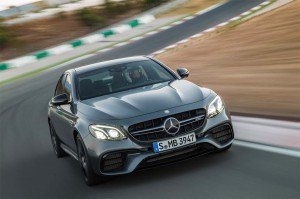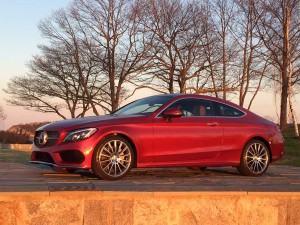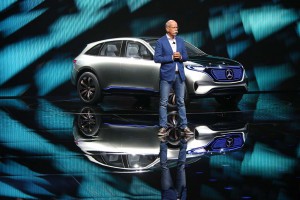
Demand for the new Mercedes-Benz E-Class has helped the German maker capture the global luxury segment sales lead.
The struggle is paying off, or so says Daimler AG CEO Dieter Zetsche. The German maker of Mercedes-Benz is confident it will end the year as the world’s biggest and most profitable producer of luxury cars.
After slipping behind two key rivals for several years, Mercedes also seems well-positioned to capture the luxury sales crown in the U.S. market, at least if it can maintain the momentum it showed during the first 11 months of 2016.
Mercedes’s surge to the top was a key target for Zetsche, though he had originally been targeting 2020 to achieve that goal. “We will achieve it this year, four years ahead of time,” the executive, with his trademark handlebar moustache, boasted during an economic conference in Frankfurt.
(Strong Mercedes sales deliver big boost to Daimler’s bottom line. Click Here for the story.)
Few seemed to take Zetsche seriously when he laid out his ambitious growth strategy in 2011, but it has become difficult to laugh at the results. Barring an unexpected December disaster, the Mercedes brand will end the year as the luxury segment’s king-of-the-hill.
Critical to getting there was overcoming problems in China, the world’s fastest-growing luxury market, as well as the United States, which has long been the largest market for high-line vehicles.
In 2015, Mercedes fell short of winning the sales crown, BMW surging past it during the final weeks of the year. And Mercedes only narrowly nudged past Japanese luxury rival Lexus.
The American market has been in turmoil this year, Lexus surging to second place, BMW dropping to third. And Mercedes will almost certainly end 2016 as the market’s king-of-the-hill.
“The latest Mercedes-Benz designs have really resonated with consumers,” said David Sullivan, senior analyst with AutoPacific, Inc. “Their latest design language came at exactly the right time to push them to the top.”
It has also helped that the Daimler subsidiary has been flooding the luxury market with an unprecedented range of new models, from the entry-lux Mercedes-Benz CLA all the way up to the Mercedes-Maybach S600.
In fact, there are actually three separate Mercedes sub-brands: the familiar Mercedes-Benz, sporty Mercedes-AMG, and, at the high end, Mercedes-Maybach offering models that start around $400,000 and put it directly into competition with the likes of Rolls-Royce and Bentley. A fourth sub-brand, Mercedes-EQ, will be added before the end of the decade and will market a dedicated line-up of battery-electric vehicles.
(Luxury al fresco. Click Here to check out the Maybach S650 Cabriolet.)
This model proliferation hasn’t come cheap and, with the launch of the EQ line, will bring product development costs since the start of the Zetsche turnaround program to more than $10 billion, according to industry analysts.
Despite the flood of new niche products, however, Mercedes remains heavily dependent on car model lines like the recently redesigned E-Class. Last month, that midsize sedan was number four on the U.S. sales charts, while the smaller Mercedes-Benz C-Class was number one, American buyers snapping up 69,822 during November, the C-Class outselling rival BMW’s long-popular 3-Series by over 6,000 units.
On the downside, C-Class sales slipped 11.7%, the E-Class off 8.5% compared to November 2015.
In fact, the overall U.S. luxury car segment has been hitting the skids, even as the U.S. economy – and the overall American automotive market – have continued to grow. Mercedes sales for the first 11 months of the year were off about 0.2%. But second-place Lexus slid 4.3%, with BMW, now in third, down 10.0%.
In fact, only second-tier brands, including Audi, Lincoln and Jaguar, showed any positive sales momentum so far this year in the U.S. American brands Lincoln and Cadillac did manage to deliver some gains globally, largely based on their expanded presence in booming China.
Whether Mercedes will be able to maintain its lead in 2017 is far from certain, despite Daimler CEO Zetsche’s optimism. The overall American market is expected to flatten, and quite possibly decline for the first time since the end of the Great Recession. That is expected to trigger heftier incentives, including at the luxury level.
China, meanwhile, has seen its car market ride a roller-coaster this year. And with a new American president raising questions about the health of both the U.S. and global economies, it’s anyone’s guess what will happen in the luxury segment.
(Lexus teases new LS flagship ahead of Detroit Auto Show debut. Click Here for a first look.)


